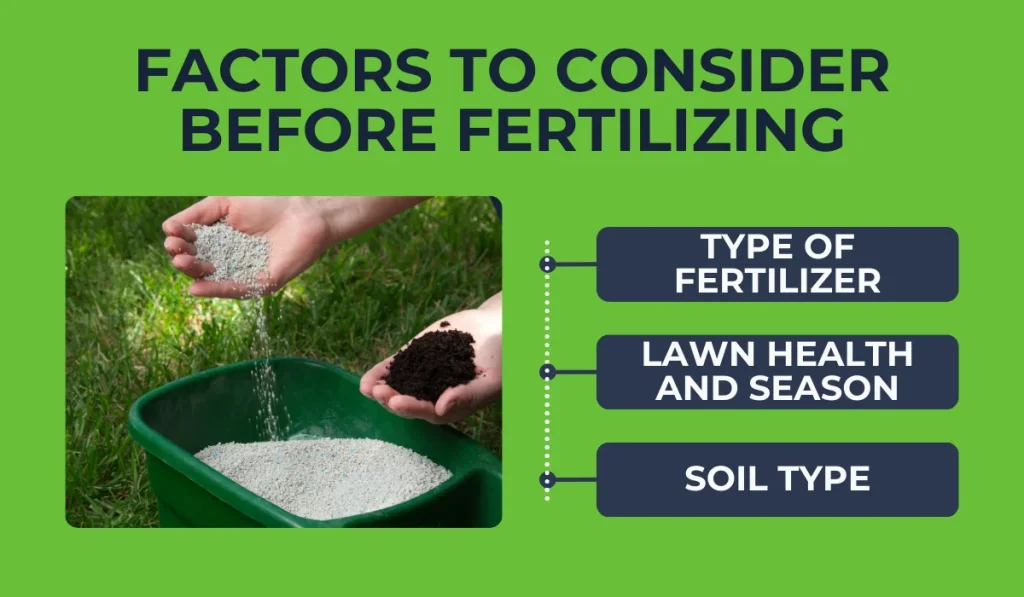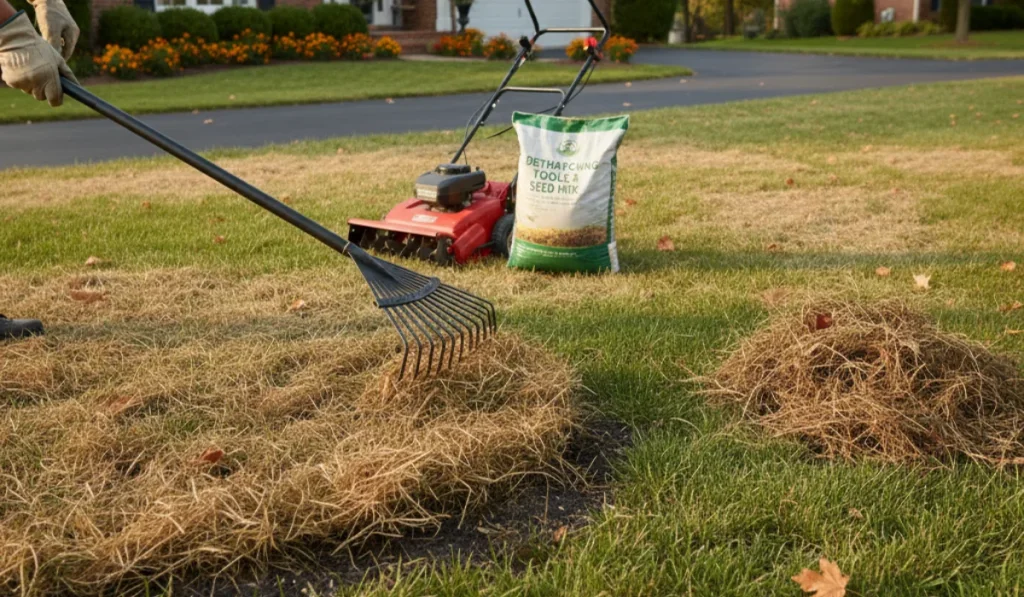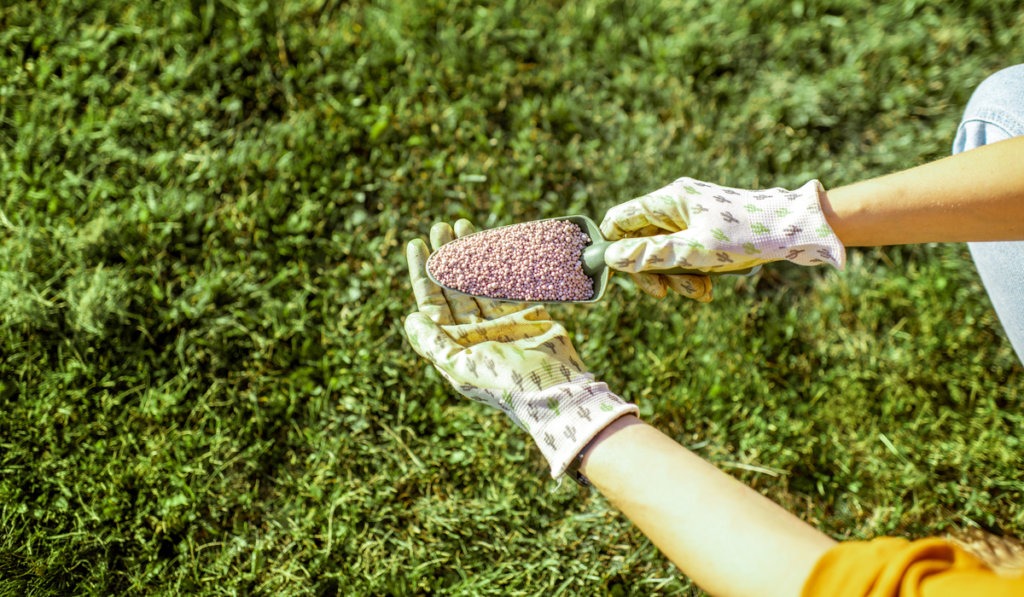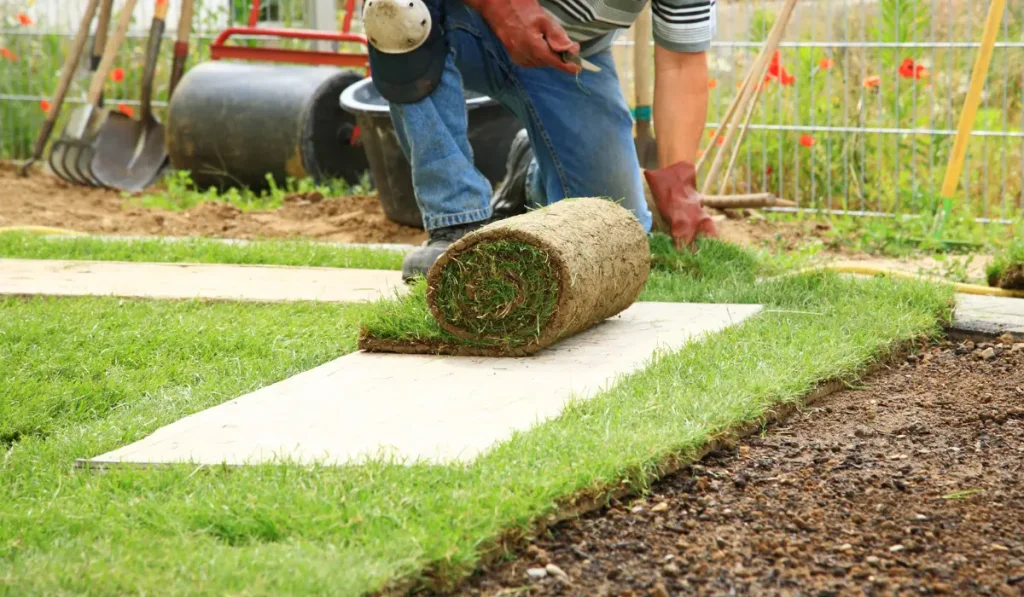If you’re aiming for a lush, green lawn, fertilizer is essential. But when it comes to timing, a question often arises: is it a good idea to fertilize your lawn before it rains? The answer isn’t a simple yes or no, it depends on factors like the type of rain, your fertilizer choice, and the health of your lawn.
In this article, we’ll explore these considerations to help you make an informed decision.
Key Takeaways
- Light rain after fertilizing helps your lawn absorb nutrients while preventing waste and supporting healthy grass growth.
- Heavy rain can wash fertilizer away, wasting your effort and causing pollution through runoff into nearby waterways.
- The type of fertilizer, soil, and grass you have will affect how rain impacts your lawn.
- Checking the weather and using proper tools ensures your fertilizer works and protects the environment.
How Does Rain Affect Fertilizer Application?
Fertilizing before rain can be a smart choice, but it depends on the weather conditions.
A light rain can help nutrients reach the soil, making it an ideal time to fertilize. However, if heavy rain is forecast, it’s better to wait or lightly water the lawn yourself to prevent runoff and waste.
Factors to Consider Before Fertilizing

1. Type of Fertilizer
Understanding how fertilizers react to rain can help you choose the best option for your lawn. Here’s a quick comparison of granular, liquid, and slow-release fertilizers when rain is in the forecast:
- Granular Fertilizer: Needs time to dissolve and may wash away in heavy rain.
- Liquid Fertilizer: Absorbs faster and is less likely to be affected by light rain.
- Slow-Release Fertilizer: Provides a steady nutrient supply but requires careful timing to prevent loss during heavy rainfall.
2. Lawn Health and Season
Timing is everything when it comes to fertilizing your lawn. Follow these guidelines to ensure your grass gets the nutrients it needs during its peak growing seasons:
- Cool-Season Grasses (like fescue): Fertilize during their active growing season, typically early spring and fall.
- Warm-Season Grasses (like Bermuda): Apply fertilizer during their peak growth in late spring and summer.
Overseeding or aeration? Fertilize lightly to support new grass seed and recovery.
3. Soil Type
Sandy soils drain faster, increasing the risk of fertilizer loss during rain. In contrast, soil types like clay retain moisture, which can help fertilizers stay in place during light rain but may cause pooling during a heavy downpour.
Sustainable Lawn Care Practices
Taking care of your lawn while being mindful of the environment is easier than you might think. Here are some tips to keep your lawn lush and green while protecting your local ecosystem.
Choose the Right Fertilizer
Unless a soil test shows otherwise, go for phosphorus-free fertilizers.
Too much phosphorus can run off into waterways during heavy rain, contributing to algae blooms and harming aquatic life.
Slow-release fertilizers are also a great choice because they deliver nutrients gradually, reducing the risk of over-fertilization.
Avoid Fertilizer Burn
Overdoing it with fertilizer can burn your grass, leaving behind brown patches that are hard to fix. To avoid this, always follow the product’s instructions.
Using a spreader is a foolproof way to ensure even application and slow-release fertilizers can help keep your lawn fed without overloading it.
Aerate Your Lawn for Better Absorption
Aerating your lawn helps water and nutrients soak into the soil instead of running off. This is especially important if you live in an area with clay soil or heavy rainfall, as compacted soil can block nutrients from reaching grass roots.
Fertilize Smartly Around Rain
Rain can help or hurt your efforts, so it’s important to plan:
- Check the Weather Forecast: Knowing when to fertilize is everything. Look for a day with light rain, or plan to water your lawn after fertilizing.
- Use the Right Tools: A spreader makes it easy to apply fertilizer evenly, and a sprinkler can provide controlled watering if Mother Nature doesn’t cooperate.
- Watch for Slopes: Fertilizing sloped areas right before rain increases the chances of runoff. It’s better to wait for dry conditions or fertilize less-prone areas first.
Don’t Forget Weed Control and Overseeding
A dense lawn naturally resists weeds, so overseeding and weed control can go a long way. This strengthens your turfgrass, helping it recover from damage and reducing how often you need to fertilize.
Prepare for Rain After Fertilizing
Weather conditions like rain can be a blessing or a problem depending on the timing and intensity. If rain sneaks up after you’ve fertilized:
- Light Rain: No need to worry! It will help wash the fertilizer into the soil where your grass can use it.
- Heavy Rain: Consider lightly watering your lawn before the rain starts. This helps settle the fertilizer into the ground, reducing the risk of runoff.
For more helpful information on lawn care or lawn maintenance, consider exploring resources about fertilizer options and seasonal upkeep strategies.



